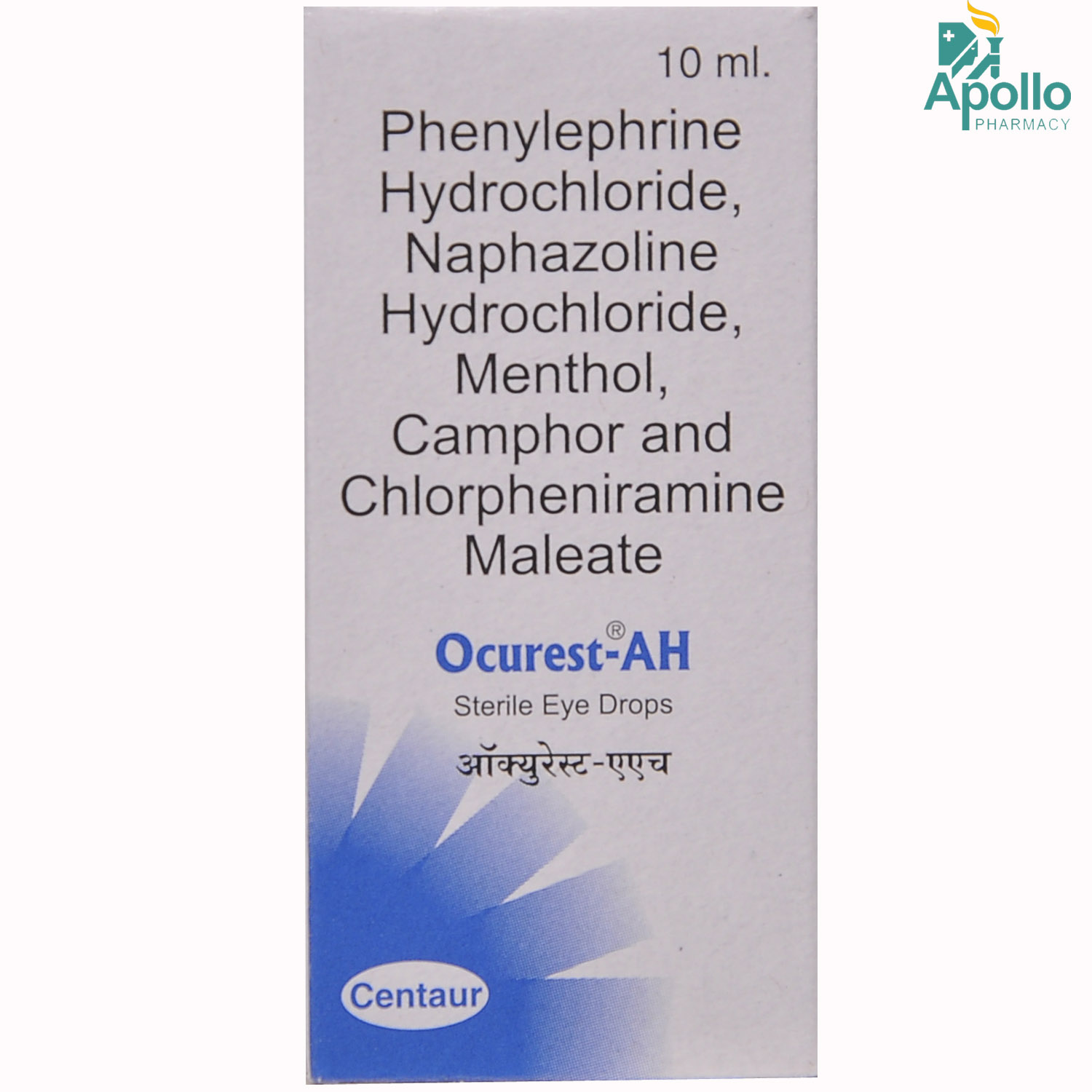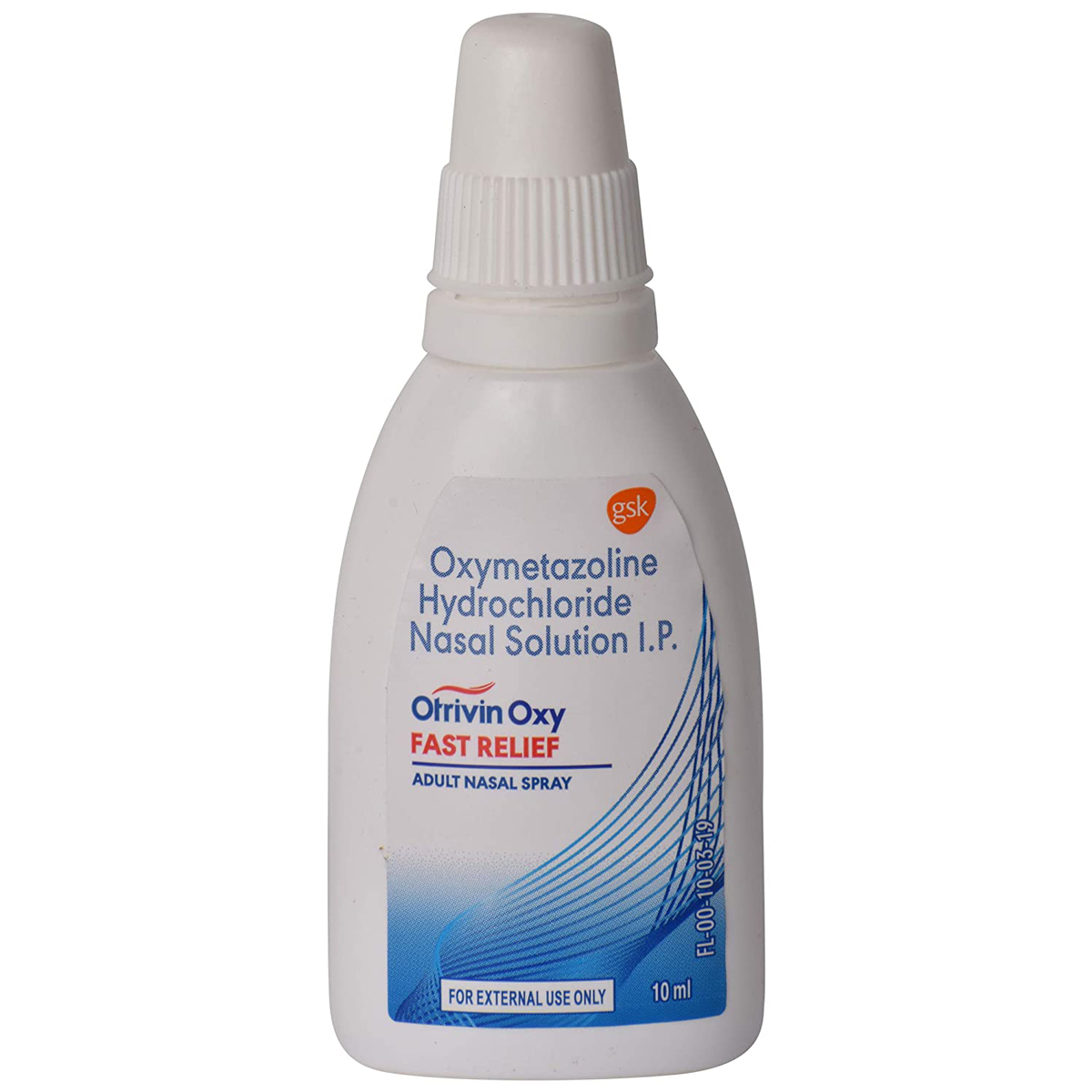Ocurest-AH Eye Drops



MRP ₹99
(Inclusive of all Taxes)
₹14.8 Cashback (15%)
know your delivery time
Provide Delivery Location
Manufacturer/Marketer :
Consume Type :
Expires on or after :
Return Policy :

Secure Payment

Trusted by 8 Crore Indians

Genuine Products
Therapeutic Class
FAQs
Disclaimer
Alcohol
Pregnancy
Breast Feeding
Driving
Liver
Kidney
Children
About Ocurest-AH Eye Drops
Uses of Ocurest-AH Eye Drops
Medicinal Benefits Mweb
Key Benefits
Directions for Use
Side Effects of Ocurest-AH Eye Drops
Drug Warnings
Drug-Drug Interactions
Drug-Drug Interactions
Login/Sign Up
Taking Ocurest-ah Eye Drops 10ml *** and Potassium citrate (in tablet or capsule form) together can increase the risk of stomach ulcers, bleeding, and gastrointestinal injury.
How to manage the interaction:
Taking Ocurest-ah Eye Drops 10ml *** with Potassium citrate is not recommended as it can lead to an interaction, it can be taken if prescribed by the doctor. However, if you experience any symptoms such as severe stomach pain, bloating, lightheadedness or dizziness, nausea, vomiting (especially with blood), decreased hunger, or dark, tarry stools, consult the doctor immediately. Do not discontinue any medications without a doctor's advice.
Taking Ocurest-ah Eye Drops 10ml *** and Potassium chloride (in tablet or capsule form) together can increase the risk of stomach ulcers, bleeding, and gastrointestinal injury.
How to manage the interaction:
Taking Ocurest-ah Eye Drops 10ml *** with Potassium chloride it not recommended as it can lead to an interaction, it can be taken if your doctor has prescribed it. However, if you experience any symptoms such as severe stomach pain, bloating, lightheadedness or dizziness, nausea, vomiting (especially with blood), decreased hunger, or dark, tarry stools, consult the doctor. Do not discontinue any medications without a doctor's advice.
Taking Ocurest-ah Eye Drops 10ml *** with Propofol may lead to increased levels of Ocurest-ah Eye Drops 10ml *** leading to side effects like high blood pressure.
How to manage the interaction:
Taking Ocurest-ah Eye Drops 10ml *** with Propofol is not recommended, but it can be taken if prescribed by the doctor. Do not discontinue the medications without consulting a doctor.
Taking Furazolidone with Ocurest-ah Eye Drops 10ml *** can cause an increase in high blood pressure.
How to manage the interaction:
Taking Furazolidone with Ocurest-ah Eye Drops 10ml *** is not recommended, it can be taken if prescribed by the doctor. However, if you experience sudden and severe headache, blurred vision, confusion, seizures, chest pain, nausea or vomiting, sweating, lightheadedness, fainting, sudden numbness or weakness (especially on one side of the body), speech difficulties, fever, consult the doctor immediately. It is advised to use Ocurest-ah Eye Drops 10ml *** only after 14 days of stopping Furazolidone.
Co-administration of Ocurest-ah Eye Drops 10ml *** with Sevoflurane can increase the levels of Ocurest-ah Eye Drops 10ml *** and lead to side effects.
How to manage the interaction:
Taking Ocurest-ah Eye Drops 10ml *** with Sevoflurane is not recommended, it can be taken if prescribed by the doctor. Do not discontinue the medications without consulting a doctor.
Taking Tranylcypromine with Ocurest-ah Eye Drops 10ml *** can increase the risk of high blood pressure.
How to manage the interaction:
Taking Tranylcypromine with Ocurest-ah Eye Drops 10ml *** is not recommended, but can be taken together if prescribed by a doctor. However, consult a doctor if you experience severe headache, blurred vision, confusion, seizures, chest pain, nausea or vomiting, sudden numbness or weakness (especially on one side of the body), speech difficulties, fever, sweating, lightheadedness, and fainting Do not discontinue any medications without consulting a doctor.
Co-administration of Selegiline with Ocurest-ah Eye Drops 10ml *** together can raise blood pressure.
How to manage the interaction:
Taking Selegiline with Ocurest-ah Eye Drops 10ml *** is not recommended, it can be taken together if prescribed by a doctor. However, consult a doctor immediately if you experience any symptoms such as severe headache, blurred vision, confusion, fits, chest pain, nausea or vomiting, sudden numbness or weakness (especially on one side of the body), speech difficulties, fever, sweating, lightheadedness, and/or fainting Do not discontinue any medications without consulting a doctor.
Co-administration of Ocurest-ah Eye Drops 10ml *** with Isocarboxazid can increase the risk of side effects.
How to manage the interaction:
Taking Ocurest-ah Eye Drops 10ml *** with Isocarboxazid can result in an interaction, but it can be taken if your doctor has advised it. However, if you have any of these symptoms - dizziness, drowsiness, confusion, disorientation, memory problems, blurred vision, dry mouth, constipation, heat intolerance, flushing, decreased sweating, difficulty urinating, rapid heartbeat, - make sure to consult the doctor right away. Do not stop using any medications without talking to a doctor.
Taking Ocurest-ah Eye Drops 10ml *** and Ethanol together may increases the risk of side effects.
How to manage the interaction:
Although taking Ocurest-ah Eye Drops 10ml *** and Ethanol together can result in an interaction, it can be taken if your doctor has advised it. Avoid physical activities such as driving or operating machinery. Do not discontinue any medications without a doctor's advice.
Taking Ocurest-ah Eye Drops 10ml *** with Idelalisib together can increase the levels of Ocurest-ah Eye Drops 10ml *** which may lead to side effects.
How to manage the interaction:
Although taking Ocurest-ah Eye Drops 10ml *** and Idelalisib together can cause an interaction, it can be taken if your doctor has suggested it. Do not discontinue any medications without consulting the doctor.
Drug-Food Interactions
Drug-Food Interactions
Login/Sign Up
Drug-Diseases Interactions
Drug-Diseases Interactions
Login/Sign Up
Drug-Drug Interactions Checker List
Habit Forming
Special Advise
Diet & Lifestyle Advise
All Substitutes & Brand Comparisons

Have a query?
Buy best Ocular products by
Entod Pharmaceuticals Ltd
Ajanta Pharma Ltd
Sunways (India) Pvt Ltd
Sun Pharmaceutical Industries Ltd
Cipla Ltd
Micro Labs Ltd
Allergan Healthcare India Pvt Ltd
Intas Pharmaceuticals Ltd
Raymed Pharmaceuticals Ltd
Nri Vision Care India Ltd
FDC Ltd
Jawa Pharmaceuticals India Pvt Ltd
Indoco Remedies Ltd
Sapient Laboratories Pvt Ltd
Senses Pharmaceuticals Pvt Ltd
Centaur Pharmaceuticals Pvt Ltd
Neomedix Healthcare India Pvt Ltd
Aromed Pharmaceuticals
Optho Remedies Pvt Ltd
Aurolab
Austrak Pvt Ltd
Lupin Ltd
Mankind Pharma Pvt Ltd
Zivira Labs Pvt Ltd
Optho Pharma Pvt Ltd
Synovia Life Sciences Pvt Ltd
Akumentis Healthcare Ltd
Eyekare
His Eyeness Ophthalmics Pvt Ltd
Protech Remedies Pvt Ltd
Runyon Pharmaceutical Pvt Ltd
Alcon Laboratories Inc
Syntho Pharmaceuticals Pvt Ltd
Alembic Pharmaceuticals Ltd
Bell Pharma Pvt Ltd
Klar Sehen Pvt Ltd
Sentiss Pharma Pvt Ltd
Irx Pharmaceuticals Pvt Ltd
Optho Life Sciences Pvt Ltd
Phoenix Remedies Pvt Ltd
Alkem Laboratories Ltd
Doctor Wonder Pvt Ltd
Hicare Pharma
Ipca Laboratories Ltd
Neon Laboratories Ltd
Okulus Drugs India
Pharmtak Ophthalmics (I) Pvt Ltd
Berry & Herbs Pharma Pvt Ltd
Glow Vision Pharmaceuticals
Kaizen Drugs Pvt Ltd
Choroid Laboratories Pvt Ltd
Indiana Opthalamics Pvt Ltd
Optica Pharmaceutical Pvt Ltd
Pharmatak Opthalmics India Pvt Ltd
Samarth Life Sciences Pvt Ltd
Vibgyor Vision Care
Mofon Drugs
Novartis India Ltd
Pharmia Biogenesis Pvt Ltd
Zydus Cadila
Appasamy Ocular Devices Pvt Ltd
Leeford Healthcare Ltd
Medivision Pharma Pvt Ltd
Orbit Life Science Pvt Ltd
X-Med Royal Pharma Pvt Ltd
Zee Laboratories Ltd
Aarma Laboratories
Guerison MS Inc
Laborate Pharmaceuticals India Ltd
Xtas Pharmaceuticals
Accurex Biomedical Pvt Ltd
Blucrab Pharma Pvt Ltd
Does Health Systems Pvt Ltd
Flagship Biotech International Pvt Ltd
Lavue Pharmaceuticals Pvt Ltd
Nutrilis Healthcare Pvt Ltd
Ursa Pharm India Pvt Ltd
Vee Remedies
Vyonics Health Care India Pvt Ltd
Warren Pharmaceuticals Pvt Ltd
Abbott India Ltd
Accvus Pharmaceuticals
Akums Drugs & Pharmaceuticals Ltd
Cadila Healthcare Ltd
Carevision Pharmaceuticals Pvt Ltd
Dey's Medical Stores (Mfg) Ltd
East West Pharma India Pvt Ltd
Eyedea Pharmaceuticals Pvt Ltd
Nimbus Healthcare Pvt Ltd
Ocuris Pharmaceuticals Pvt Ltd
Sherings Pharmaceuticals
Tarks Pharmaceuticals Pvt Ltd
Vcan Biotech
Vision Medilink
Aice Health Care Pvt Ltd
Appasamy Pharmaceuticals Pvt Ltd
Asperia Lifescience Pvt Ltd
Beatum Healthcare Pvt Ltd
East India Pharmaceutical Works Ltd
Grevis Pharmaceutical Pvt Ltd
Customers Also Bought


